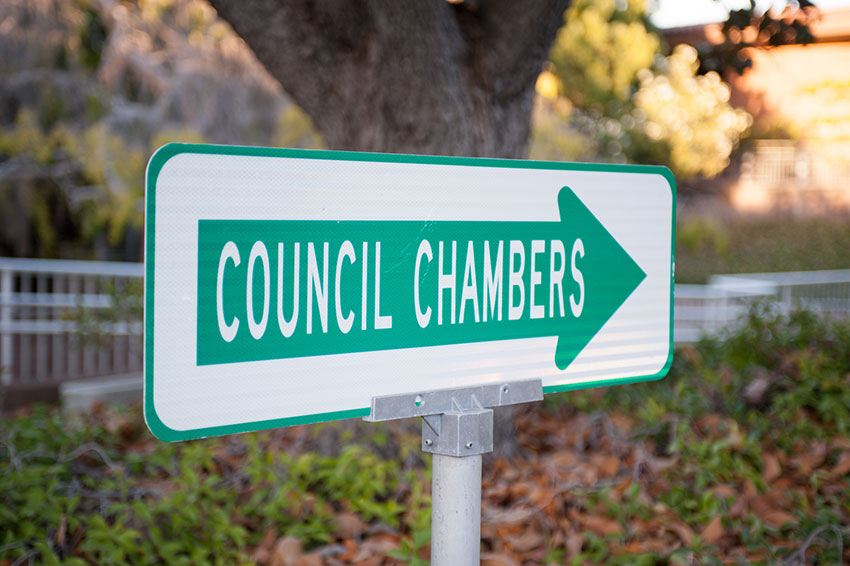

History buffs may have noted that 2012 is the 100-year anniversary of the first paving of the California State Highway System, which began with paving the first strip of the El Camino Real on the Peninsula. A century later the El Camino still confronts us with challenges to public policy and aspirations – shorthand for both California’s rich past and neglected present.
It took two decades to complete the road between San Francisco and San Jose, at which time it was the most-heavily traveled road in California. The achievement was noted – along with an encyclopedia of detail about, asphalt, concrete, right-of-ways, and 4-inch compacted rock base – in the Official Journal of the Department of Public Works, State of California in May 1930. District Engineer Colonel John Skeggs began his meditation with the Franciscan Fathers who pioneered the road:
“Could the old mission padres of early California history see today the modern El Camino Real replacing the original winding, dusty track which they trod on foot or rode on the back of the slow-moving donkey, it is difficult to see which would seem the more miraculous to them – the myriad of swift, self-propelled vehicles slipping by, or the smooth wide roadway stretching ahead mile after mile in long, straight courses, varied with graceful curves. It was lovely in the simple beauty of those historic days, but they would find it hardly less beautiful now, and far more magnificent.”
The 21st century El Camino would no doubt still amaze the padres. But whether they would find in its decaying mid-20th-century strip malls architectural achievements and breathtaking vistas to rival those of mission-era California is another question.
Just as today’s proposal to give the El Camino a transformative overhaul has drawn objections from across the rainbow of political opinion, the first incarnation of the El Camino as a paved highway wasn’t without controversy.
In 1907 the state legislature proposed to connect northern and southern California with a “magnificent El Camino Real” and appropriated $25,000 for preliminary surveying work, reported the March 11, 1907 edition of the San Jose Mercury.
“The old road, now almost forgotten, was originally built between Sonoma county and San Diego and touched at all the missions along the cost, including Santa Clara. It is now proposed…to construct and make this trail a modern highway…[with] a historic value and significance that will make it popular and appeal especially to tourists…between the northern and southern boundaries of the state.”
Opposition to the idea was quick in forming. Two months later – in what would prove to be breathtakingly shortsighted analysis – the Grange took a public stand against the road-building proposal, the Mercury reported.
“…The rebuilding of the road sprang from purely sentimental motives and that it would be of no practical benefit for fright haulage as it paralleled both the railroad and the ocean, the expense would not be warranted. It was contended that counties outside the territory of the road would not vote for the proposition …[unless] they also could get…roads and highways within their counties, and as a consequence the tax upon the people of the state for roadways would become a too heavy burden to bear.”
The state nonetheless went ahead with the El Camino project, signing the first construction contract in San Mateo on September 19, 1908 – the event that was commemorated in San Bruno this month.
In 1910 Charles Willard Coe exhorted, in a New Year’s Mercury News editorial, “that California should lead the whole world in the excellent character of its highways.” Coe proposed a public-private partnership to complete the construction of the “new” El Camino Real, noting the PR opportunity presented by influx of tourists expected for the Panama Pacific Exposition.
“Let them see that we have…one of the grandest, widest and best new highways in the world…to advertise the splendid natural advantages of our state, city and valley,” wrote Coe, projecting bountiful returns from the El Camino investment. “Given one good road, gradually the system will be extended…such a system of good roads will put California in the front rank…and…help make life in California all that it should be – a ‘joy forever.'”
Although we wouldn’t use the same flowery adjectives today, Coe’s concluding recommendation remains relevant today.
“Let everybody in California determine not only to talk for good roads, but act and unite to cooperate in building one thoroughly up-to-date roadway, The Kings Highway, and not to rest until [it’s] completed. Let it be in every respect worthy of a King.”
What can we do today? Start by visiting the Grand Boulevard Initiative website and becoming a Friend of the Grand Boulevard at www.grandboulevard.net/friends.html.



